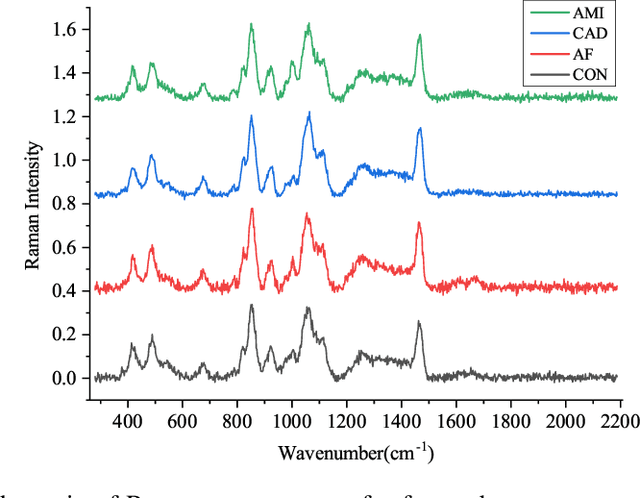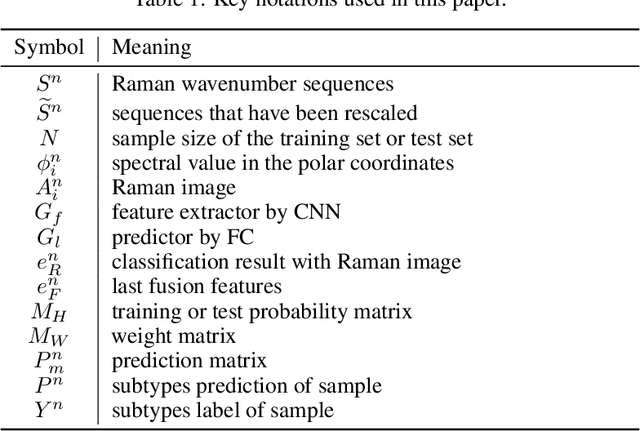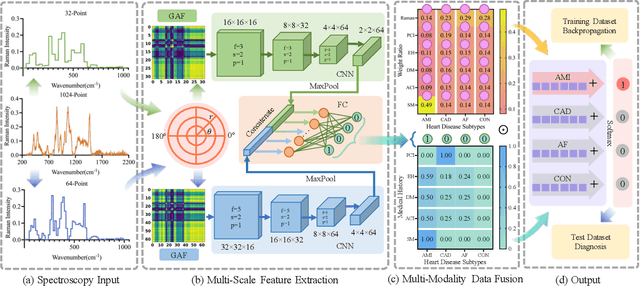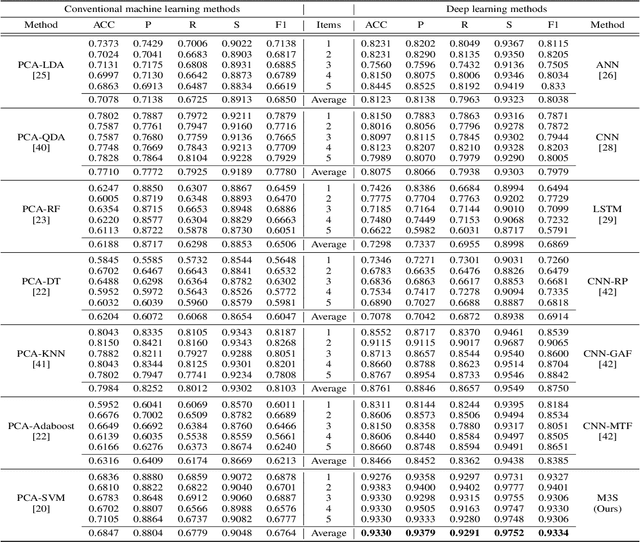Xiankai Li
Multi-Modality Multi-Scale Cardiovascular Disease Subtypes Classification Using Raman Image and Medical History
Apr 18, 2023



Abstract:Raman spectroscopy (RS) has been widely used for disease diagnosis, e.g., cardiovascular disease (CVD), owing to its efficiency and component-specific testing capabilities. A series of popular deep learning methods have recently been introduced to learn nuance features from RS for binary classifications and achieved outstanding performance than conventional machine learning methods. However, these existing deep learning methods still confront some challenges in classifying subtypes of CVD. For example, the nuance between subtypes is quite hard to capture and represent by intelligent models due to the chillingly similar shape of RS sequences. Moreover, medical history information is an essential resource for distinguishing subtypes, but they are underutilized. In light of this, we propose a multi-modality multi-scale model called M3S, which is a novel deep learning method with two core modules to address these issues. First, we convert RS data to various resolution images by the Gramian angular field (GAF) to enlarge nuance, and a two-branch structure is leveraged to get embeddings for distinction in the multi-scale feature extraction module. Second, a probability matrix and a weight matrix are used to enhance the classification capacity by combining the RS and medical history data in the multi-modality data fusion module. We perform extensive evaluations of M3S and found its outstanding performance on our in-house dataset, with accuracy, precision, recall, specificity, and F1 score of 0.9330, 0.9379, 0.9291, 0.9752, and 0.9334, respectively. These results demonstrate that the M3S has high performance and robustness compared with popular methods in diagnosing CVD subtypes.
 Add to Chrome
Add to Chrome Add to Firefox
Add to Firefox Add to Edge
Add to Edge